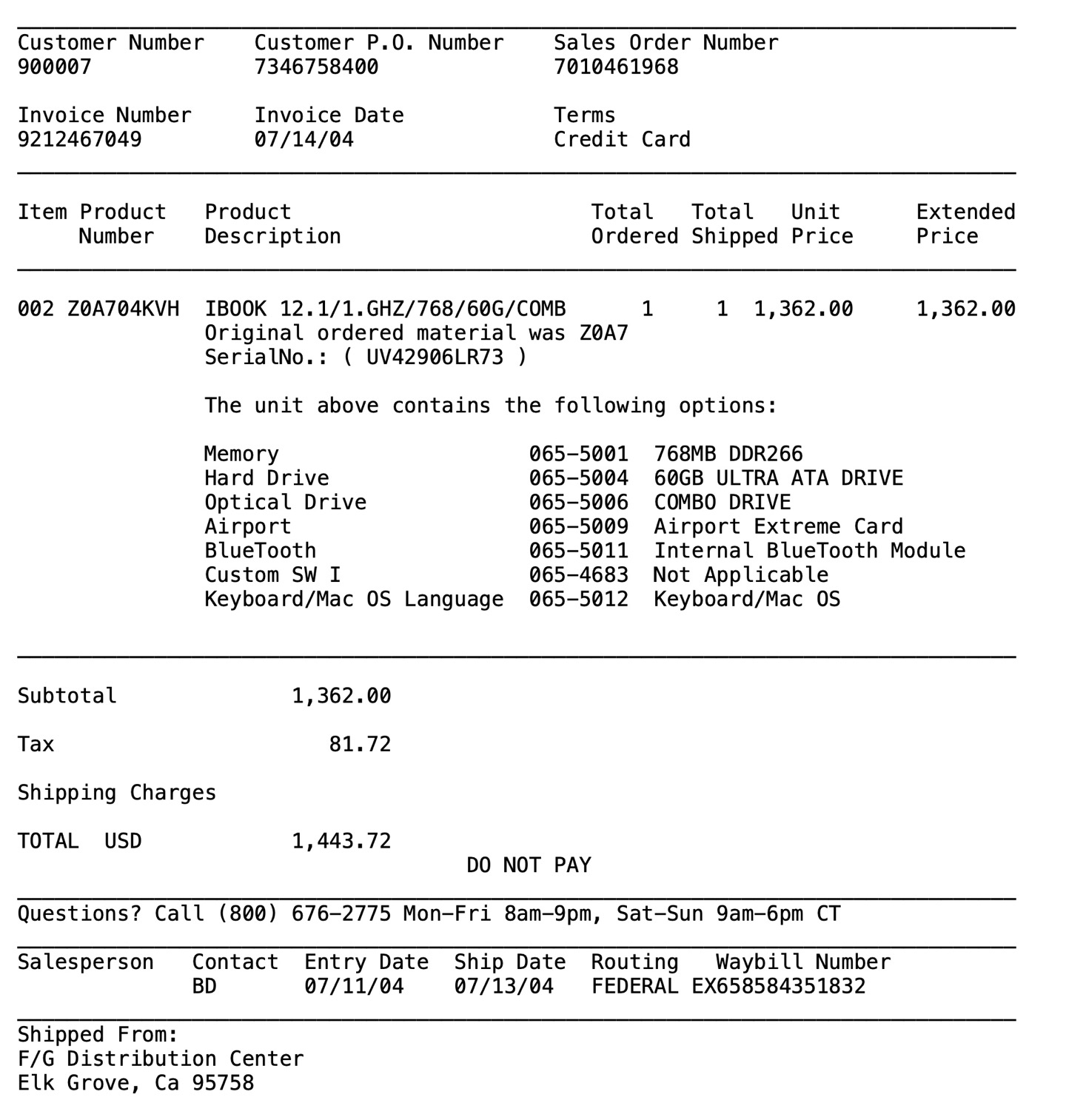Full-breadth Developers
The software industry is at an inflection point unlike anything in its brief history. Generative AI is all anyone can talk about. It has rendered entire product categories obsolete and upended the job market. With any economic change of this magnitude, there are bound to be winners and losers. So far, it sure looks like full-breadth developers—people with both technical and product capabilities—stand to gain as clear winners.
What makes me so sure? Because over the past few months, the engineers I know with a lick of product or business sense have been absolutely scorching through backlogs at a dizzying pace. It may not map to any particular splashy innovation or announcement, but everyone agrees generative coding tools crossed a significant capability threshold recently. It's what led me to write this. In just two days, I've completed two months worth of work on Posse Party.
I did it by providing an exacting vision for the app, by maintaining stringent technical standards, and by letting Claude Code do the rest. If you're able to cram critical thinking, good taste, and strong technical chops into a single brain, these tools hold the potential to unlock incredible productivity. But I don't see how it could scale to multiple people. If you were to split me into two separate humans—Product Justin and Programmer Justin—and ask them to work the same backlog, it would have taken weeks instead of days. The communication cost would simply be too high.
When I step back and look around, however, most of the companies and workers I see are currently on track to wind up as losers when all is said and done.
In recent decades, businesses have not only failed to cultivate full-breadth developers, they've trained a generation into believing product and engineering roles should be strictly segregated. To suggest a single person might drive both product design and technical execution would sound absurd to many people. Even for companies who realize inter-disciplinary developers are the new key to success, their outmoded job descriptions and salary bands are failing to recruit and retain them.
There is an urgency to this moment. Up until a few months ago, the best developers played the violin. Today, they play the orchestra.
I've been obsessed with this issue my entire career, so pardon me if I betray any feelings of schadenfreude as I recount the following story.
I managed to pass a phone screen with Google in 2007 before graduating college. This earned me an all-expense paid trip for an in-person interview at the vaunted Googleplex. I went on to experience complete ego collapse as I utterly flunked their interview process. Among many deeply embarrassing memories of the trip was a group session with a Big Deal Engineer who was introduced as the inventor of BigTable. (Jeff Dean, probably? Unsure.) At some point he said, "one of the great things about Google is that engineering is one career path and product is its own totally separate career path."
I had just paid a premium to study computer science at a liberal arts school and had the audacity to want to use those non-technical skills, so I bristled at this comment. And, being constitutionally unable to keep my mouth shut, I raised my hand to ask, "but what if I play a hybrid class? What if I think it's critical for everyone to engage with both technology and product?"
The dude looked me dead in the eyes and told me I wasn't cut out for Google.
The recruiter broke a long awkward silence by walking us to the cafeteria for lunch. She suggested I try the ice cream sandwiches. I had lost my appetite for some reason.
In the years since, an increasing number of companies around the world have adopted Silicon Valley's trademark dual-ladder career system. Tech people sit over here. Idea guys go over there.
Back to winners and losers.
Some have discarded everything they know in favor of an "AI first" workflow. Others decry generative AI as a fleeting boondoggle like crypto. It's caused me to broach the topic with trepidation—as if I were asking someone their politics. I've spent the last few months noodling over why it's so hard to guess how a programmer will feel about AI, because people's reactions seem to cut across roles and skill levels. What factors predict whether someone is an overzealous AI booster or a radicalized AI skeptic?
Then I was reminded of that day at Google. And I realized that developers I know who've embraced AI tend to be more creative, more results-oriented, and have good product taste. Meanwhile, AI dissenters are more likely to code for the sake of coding, expect to be handed crystal-clear requirements, or otherwise want the job to conform to a routine 9-to-5 grind. The former group feels unchained by these tools, whereas the latter group just as often feels threatened by them.
When I take stock of who is thriving and who is struggling right now, a person's willingness to play both sides of the ball has been the best predictor for success.
| Role |
Engineer |
Product |
Full-breadth |
| Junior |
❌ |
❌ |
✅ |
| Senior |
❌ |
❌ |
✅ |
Breaking down the patterns that keep repeating as I talk to people about AI:
-
Junior engineers, as is often remarked, don't have a prayer of sufficiently evaluating the quality of an LLM's work. When the AI hallucinates or makes mistakes, novice programmers are more likely to learn the wrong thing than to spot the error. This would be less of a risk if they had the permission to decelerate to a snail's pace in order to learn everything as they go, but in this climate nobody has the patience. I've heard from a number of senior engineers that the overnight surge in junior developer productivity (as in "lines of code") has brought organization-wide productivity (as in "working software") to a halt—consumed with review and remediation of low-quality AI slop. This is but one factor contributing to the sense that lowering hiring standards was a mistake, so it's no wonder that juniors have been first on the chopping block
-
Senior engineers who earnestly adopt AI tools have no problem learning how to coax LLMs into generating "good enough" code at a much faster pace than they could ever write themselves. So, if they're adopting AI, what's the problem? The issue is that the productivity boon is becoming so great that companies won't need as many senior engineers as they once did. Agents work relentlessly, and tooling is converging on a vision of senior engineers as cattle ranchers, steering entire herds of AI agents. How is a highly-compensated programmer supposed to compete with a stable of agents that can produce an order of magnitude more code at an acceptable level of quality for a fraction of the price?
-
Junior product people are, in my experience, largely unable to translate amorphous real-world problems into well-considered software solutions. And communicating those solutions with the necessary precision to bring those solutions to life? Unlikely. Still, many are having success with app creation platforms that provide the necessary primitives and guardrails. But those tools always have a low capability ceiling (just as with any low-code/no-code platform). Regardless, is this even a role worth hiring? If I wanted mediocre product direction, I'd ask ChatGPT
-
Senior product people are among the most excited I've seen about coding agents—and why shouldn't they be? They're finally free of the tyranny of nerds telling them everything is impossible. And they're building stuff! Reddit is lousy with posts showing off half-baked apps built in half a day. Unfortunately, without routinely inspecting the underlying code, anything larger than a toy app is doomed to collapse under its own weight. The fact LLMs are so agreeable and unwilling to push back often collides with the blue-sky optimism of product people, which can result in each party leading the other in circles of irrational exuberance. Things may change in the future, but for now there's no way to build great software without also understanding how it works
Hybrid-class operators, meanwhile, seem to be having a great time regardless of their skill level or years experience. And that's because what differentiates full-stack developers is less about capability than about mindset. They're results-oriented: they may enjoy coding, but they like getting shit done even more. They're methodical: when they encounter a problem, they experiment and iterate until they arrive at a solution. The best among them are visionaries: they don't wait to be told what to work on, they identify opportunities others don't see, and they dream up software no one else has imagined.
Many are worried the market's rejection of junior developers portends a future in which today's senior engineers age out and there's no one left to replace them. I am less concerned, because less experienced full-breadth developers are navigating this environment extraordinarily well. Not only because they excitedly embraced the latest AI tools, but also because they exhibit the discipline to move slowly, understand, and critically assess the code these tools generate. The truth is computer science majors, apprenticeship programs, and code schools—today, all dead or dying—were never very effective at turning out competent software engineers. Claude Pro may not only be the best educational resource under $20, it may be the best way to learn how to code that's ever existed.
Maybe you've read this far and the message hasn't resonated. Maybe it's triggered fears or worries you've had about AI. Maybe I've put you on the defensive and you think I'm full of shit right now. In any case, whether your organization isn't designed for this new era or you don't yet identify as a full-breadth developer, this section is for you.
While my goal here is to coin a silly phrase to help us better communicate about the transformation happening around us, we've actually had a word for full-breadth developers all along: consultant.
And not because consultants are geniuses or something. It's because, as I learned when I interviewed at Google, if a full-breadth developer wants to do their best work, they need to exist outside the organization and work on contract. So it's no surprise that some of my favorite full-breadth consultants are among AI's most ambitious adopters. Not because AI is what's trending, but because our disposition is perfectly suited to get the most out of these new tools. We're witnessing their potential to improve how the world builds software firsthand.
When founding our consultancy Test Double in 2011, Todd Kaufman and I told anyone who would listen that our differentiator—our whole thing—was that we were business consultants who could write software. Technology is just a means to an end, and that end (at least if you expect to be paid) is to generate business value. Even as we started winning contracts with VC-backed companies who seemed to have an infinite money spigot, we would never break ground until we understood how our work was going to make or save our clients money. And whenever the numbers didn't add up, we'd push back until the return on investment for hiring Test Double was clear.
So if you're a leader at a company who has been caught unprepared for this new era of software development, my best advice is to hire an agency of full-breadth developers to work alongside your engineers. Use those experiences to encourage your best people to start thinking like they do. Observe them at work and prepare to blow up your job descriptions, interview processes, and career paths. If you want your business to thrive in what is quickly becoming a far more competitive landscape, you may be best off hitting reset on your human organization and starting over. Get smaller, stay flatter, and only add structure after the dust settles and repeatable patterns emerge.
A lot of developers are feeling scared and hopeless about the changes being wrought by all this. Yes, AI is being used as an excuse by executives to lay people off and pad their margins. Yes, how foundation models were trained was unethical and probably also illegal. Yes, hustle bros are running around making bullshit claims. Yes, almost every party involved has a reason to make exaggerated claims about AI.
All of that can be true, and it still doesn't matter. Your job as you knew it is gone.
If you want to keep getting paid, you may have been told to, "move up the value chain." If that sounds ambiguous and unclear, I'll put it more plainly: figure out how your employer makes money and position your ass directly in-between the corporate bank account and your customers' credit card information. The longer the sentence needed to explain how your job makes money for your employer, the further down the value chain you are and the more worried you should be. There's no sugar-coating it: you're probably going to have to push yourself way outside your comfort zone.
Get serious about learning and using these new tools. You will, like me, recoil at first. You will find, if you haven't already, that all these fancy AI tools are really bad at replacing you. That they fuck up constantly. Your new job starts by figuring out how to harness their capabilities anyway. You will gradually learn how to extract something that approximates how you would have done it yourself. Once you get over that hump, the job becomes figuring out how to scale it up. Three weeks ago I was a Cursor skeptic. Today, I'm utterly exhausted working with Claude Code, because I can't write new requirements fast enough to keep up with parallel workers across multiple worktrees.
As for making yourself more valuable to your employer, I'm not telling you to demand a new job overnight. But if you look to your job description as a shield to protect you from work you don't want to do… stop. Make it the new minimum baseline of expectations you place on yourself. Go out of your way to surprise and delight others by taking on as much as you and your AI supercomputer can handle. Do so in the direction of however the business makes its money. Sit down and try to calculate the return on investment of your individual efforts, and don't slow down until that number far exceeds the fully-loaded cost you represent to your employer.
Start living these values in how you show up at work. Nobody is going to appreciate it if you rudely push back on every feature request with, "oh yeah? How's it going to make us money?" But your manager will appreciate your asking how you can make a bigger impact. And they probably wouldn't be mad if you were to document and celebrate the ROI wins you notch along the way. Listen to what the company's leadership identifies as the most pressing challenges facing the business and don't be afraid to volunteer to be part of the solution.
All of this would have been good career advice ten years ago. It's not rocket science, it's just deeply uncomfortable for a lot of people.
Part of me is already mourning the end of the previous era. Some topics I spent years blogging, speaking, and building tools around are no longer relevant. Others that I've been harping on for years—obsessively-structured code organization and ruthlessly-consistent design patterns—are suddenly more valuable than ever. I'm still sorting out what's worth holding onto and what I should put back on the shelf.
As a person, I really hate change. I wish things could just settle down and stand still for a while. Alas.
If this post elicited strong feelings, please e-mail me and I will respond. If you find my perspective on this stuff useful, you might enjoy my podcast, Breaking Change. 💜


